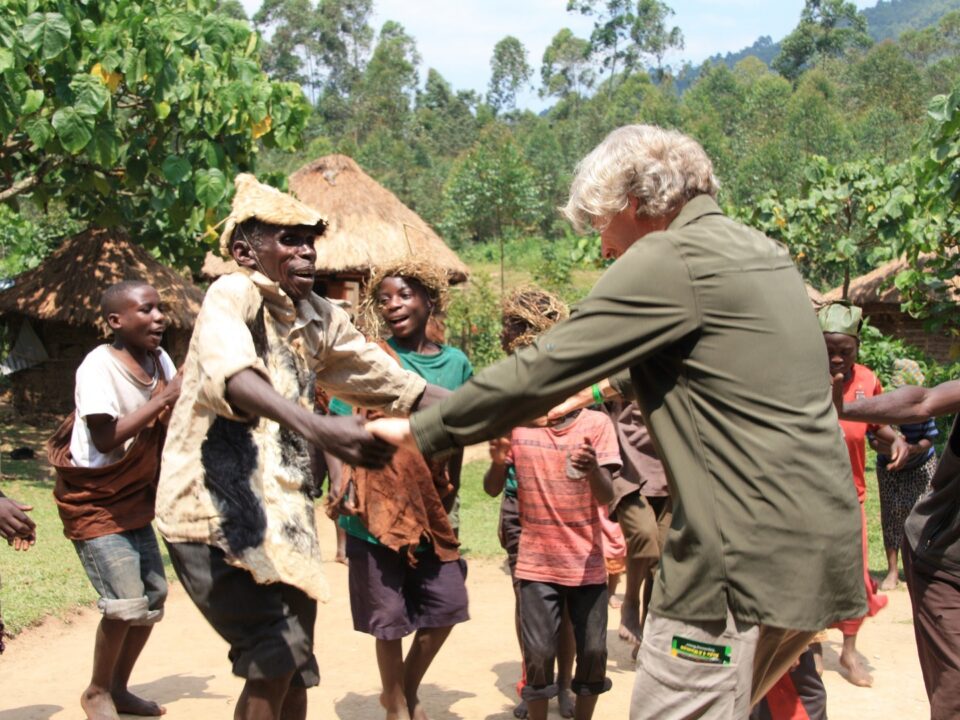- All
- Abseiling Adventure
- Accessible Tourism
- Adventure & Nature
- Adventure Safaris
- Adventure Tour Uganda
- Adventure Tourism
- Adventure Tours
- Adventure Tours in Uganda
- Adventure Travel
- Adventure travel Africa
- Adventure travel Rwanda
- Adventure Travel Uganda
- Affordable Safari Stays
- Africa Beach Holidays
- Africa hiking tours
- Africa Mountains
- Africa Nature & Wildlife
- Africa Travel
- African adventure
- African Birds
- African Cuisine
- African Culture & Crafts
- African culture and travel
- African Elephants
- African Food and Cuisine
- African Hospitality
- African Landscapes
- African Market Experiences
- African Predators
- African Rainforest Tours
- African Safari Animals
- African Safari Destinations
- African Safari Holidays
- African Safari Itineraries
- African Safari Travel
- African Safaris
- African Travel Destinations
- African Travel Experiences
- African Travel Guides
- African Wildlife
- African Wildlife Adventures
- African Wildlife Experiences
- African wildlife tour
- African Wildlife Travel
- Airports in Uganda
- Akagera National Park
- Akagera National Park boat safari
- Akagera National Park Safaris
- Amboseli National Park
- Animal sanctuary Uganda
- Balloon Safari Experiences
- Batwa Community Experiences
- Batwa Cultural Trail
- Batwa People
- Batwa Pygmies
- Beach Destinations
- Beach Holidays
- Best Birding Destinations Uganda
- Best Safari Experiences in Africa
- Best time for gorilla trekking
- Best Time for Safari Uganda
- Best Time to Visit
- Best time to visit Amboseli
- Best Time to Visit Uganda
- Big Cats
- Big Cats in Africa
- Big Five
- Big Five Safari
- Big Five Safaris Uganda
- Bird Watching
- Bird Watching in Rwanda
- Bird Watching in Uganda
- Bird Watching Tours
- Birding in East Africa
- Birding in Uganda
- Birds of Prey
- Birdwatching
- Birdwatching & Birding
- Birdwatching Destinations
- Birdwatching Destinations Kenya
- Birdwatching in Africa
- Birdwatching in Kenya
- Birdwatching in Rwanda
- Birdwatching in Uganda
- Birdwatching Safaris
- birdwatching Uganda
- Boat Cruising
- Boat Safaris
- Boat Safaris in Africa
- Boat Trips
- Bucket List Experiences
- Budget Travel
- Budongo Forest Reserve
- Bwindi gorilla trekking
- Bwindi Impenetrable Forest
- Bwindi Impenetrable Forest National Park
- Bwindi Impenetrable National Park
- Canopy Walks
- Cheetahs vs Leopards
- chimpanzee habituation
- Chimpanzee Sanctuary
- Chimpanzee Tracking
- Chimpanzee Tracking Safaris
- Chimpanzee Trekking
- Chimpanzee Trekking and Sanctuaries
- Chimpanzee trekking in Rwanda
- Chimpanzee Trekking Uganda
- City Guides
- City Tours
- Coffee Tourism
- Colonial Architecture in Uganda
- Community Development
- Community Development Projects
- Community Tourism
- Community Tourism Experiences
- Community Tourism Rwanda
- Community Tourism Uganda
- Community-Based Conservation
- Community-Based Tourism
- Congo gorilla trekking
- Congo River Attractions
- Congo Safaris
- Congo travel
- Congo-Nile Trail
- Conservation
- Conservation & Eco-Tourism
- Conservation and Community Tourism
- Conservation and Eco-Tourism
- Conservation and Wildlife Education
- Conservation Tourism
- Conservation Tours
- Conservation Travel
- Cooking class Uganda
- Crater lakes in Uganda
- crater lakes Uganda
- Crested Crane
- Cross-Border Tours
- Cultural & Heritage Travel
- Cultural & Scenic Trails
- Cultural & Wildlife Tours
- Cultural and Heritage Tourism
- Cultural and Historical Travel
- Cultural and Nature Tours
- Cultural Encounters
- Cultural Etiquette
- Cultural Experiences
- Cultural Experiences in Uganda
- Cultural Heritage
- Cultural Heritage Sites
- cultural preservation
- Cultural Tourism
- Cultural Tourism Rwanda
- Cultural Tourism Uganda
- Cultural Tours
- Cultural Tours in Rwanda
- Cultural Tours in Tanzania
- Cultural Tours in Uganda
- Cultural tours Karamoja
- Cultural tours Uganda
- Cultural Villages & Community Tours
- Culture & Heritage
- Cycling Adventures
- Dangerous Animals
- Day Tours from Kigali
- Democratic Republic of Congo safety
- Desert Expeditions
- Desert Travel Africa
- Desert Wildlife Africa
- Diani Beach
- Disease Prevention
- Domestic flights Uganda
- East Africa Adventures
- East Africa Eco Lodges
- East Africa Safari Experiences
- East Africa Safari Holidays
- East Africa Safaris
- East Africa Tourism
- East Africa Travel
- East Africa Travel Guides
- East Africa wildlife safaris
- East Africa Wildlife Tours
- Echuya Forest Reserve
- Eco Travel Uganda
- Eco-Friendly Safari Tours
- Eco-Friendly Travel
- Eco-Tourism
- Eco-Tourism & Conservation
- Eco-Tourism & Sustainability
- Eco-Tourism and Conservation
- Eco-Tourism in Africa
- Eco-Tourism in Rwanda
- Eco-Tourism in Uganda
- eco-tourism Uganda
- Ecotourism Destinations
- Educational Safaris
- Educational Tourism Rwanda
- Educational Tours
- Educational wildlife tours
- Elderly Travel
- Elephant Tours
- Endangered Species
- Entebbe International Airport
- Entebbe safaris
- Entebbe Tourism
- Entebbe Zoo
- Ethical Tourism
- Evolution and Science
- Exclusive Safaris Kenya
- Experiya Tour Company
- Experiya Tour Company Experiences
- Explore East Africa
- Family Safari Packages
- Family Safari Travel
- Family Safaris in Kenya
- Family Travel
- Family Travel Africa
- Family-Friendly Travel
- Family-friendly wildlife activities
- Festivals & Traditions
- first-time visitors Kenya
- Fishing Adventures
- Flying Safaris
- Folklore & Traditions
- Food & Drink Tourism
- Forest and Nature Walks
- Forest bathing
- Fort Portal lakes
- Fort Portal Uganda
- Game Drive
- Game drives
- Game Drives for Kids
- Game drives Uganda
- Glamping
- Golden Monkey Tracking
- Golden Monkey Trekking
- Gombe National Park
- Gorilla & Chimpanzee Trekking
- Gorilla and Monkey Trekking
- Gorilla Behavior
- Gorilla Conservation
- Gorilla Diet & Feeding Habits
- Gorilla Families
- Gorilla Habitat Preservation
- Gorilla Habituation
- Gorilla Permit Payment
- Gorilla Permits & Regulations
- gorilla population
- Gorilla Safari Packages Uganda
- Gorilla Trekking
- Gorilla Trekking Add-ons
- gorilla trekking Congo
- Gorilla Trekking Experiences
- Gorilla Trekking Gear
- Gorilla Trekking Health
- Gorilla Trekking in Africa
- Gorilla Trekking in Uganda
- Gorilla Trekking Permits Uganda
- Gorilla Trekking Preparation
- Gorilla trekking rules
- Gorilla Trekking Rwanda
- Gorilla Trekking Safaris
- Gorilla Trekking Tips & Preparation
- Gorilla trekking tips Uganda
- Gorilla Trekking Tours
- Gorilla Trekking Uganda
- Gorilla Viewing
- Great Migration
- Great Migration Safaris
- Great Rift Valley Tours
- Great Wildebeest Migration
- Grey Crowned Cranes
- Griffin Falls Camp
- Group Safaris in Kenya
- Group Travel Experiences
- Habitat Destruction
- Heritage & History
- heritage travel
- Hiking
- Hiking & Nature Trails
- Hiking & Trekking
- Hiking and Adventure Tours
- Hiking in Rwanda
- Hiking in uganda
- Historical & Archaeological Sites
- Historical & Cultural Tours in Rwanda
- Historical Sites in Rwanda
- Historical Sites in Uganda
- History & Culture of Rwanda
- History & Heritage
- honeymoon safari
- Horseback Safaris
- Hot Air Balloon
- Hot Air Balloon Experiences
- Hot Air Balloon Safaris
- Hot Springs in Uganda
- Hotels & Accommodation
- Human-Wildlife Conflict
- Industrial Tourism
- Ishasha tree-climbing lions
- Island Tours
- Islands of Lake Kivu
- Jinja Activities
- Kahuzi-Biega gorillas
- Kahuzi-Biega National Park
- Kampala Attractions
- Kampala City Tours
- Kampala Travel
- Kampala Travel Highlights
- Kazinga Channel
- Kazinga Channel Boat Cruise
- Kazinga Channel Cruise
- Kenya Culture
- Kenya Safari
- Kenya Safari Tips
- Kenya Safari Tours
- Kenya Safaris
- Kenya safety
- Kenya tourism
- Kenya Tours
- Kenya Travel
- Kenya travel guide
- Kenya travel tips
- Kenya visa information
- Kenya Wildlife Safaris
- Kenya Wildlife Tourism
- Kenyan Wildlife
- Kibale Forest National Park
- Kibale National Park
- Kibale National Park Activities
- Kibuye Attractions
- Kidepo National Park
- Kidepo Valley
- Kidepo Valley National Park
- Kidepo Valley Safaris
- Kigali Attractions
- Kigali City Experiences
- Kigali City Tours
- Kigali International Airport
- Kigali Nightlife
- Kisiizi Falls
- Kisoro Travel Guide
- Lake Bunyonyi
- Lake Bunyonyi Tours
- Lake Kivu
- Lake Kivu cruises
- Lake Kivu Experiences
- Lake Mburo National Park
- Lake Mutanda
- Lake Nakuru
- Lake victoria
- Lake Victoria Adventures
- Landscape Photography
- Language for tourists
- Leopard tracking
- Lion tracking
- Local food experiences
- Luxury & Budget Safari Options
- Luxury & Mid-Range Safaris
- Luxury Beach Resorts
- Luxury Lodges
- Luxury Safaris
- Luxury Travel
- Maasai Culture
- Maasai Mara Conservancies
- Mabamba Swamp
- Mabamba Swamp Tours
- masai mara
- Masai Mara Group Safari
- Masai Mara National Reserve
- Masai Mara Safari
- Masai Mara Safaris
- Mgahinga Gorilla National Park
- Mgahinga National Park
- Midrange Accommodation in Uganda
- Migratory Birds Kenya
- monkey tracking
- Mount Elgon
- Mount Elgon hiking
- Mount Elgon National Park
- Mount Elgon Region
- Mount Kilimanjaro
- Mount Morungole Hike
- Mount Nyiragongo Hike
- Mount Rwenzori
- Mountain Biking Uganda
- Mountain Climbing
- Mountain Climbing Uganda
- Mountain Elgon National Park
- Mountain gorilla experience
- Mountain gorilla experiences
- Mountain Gorilla Trekking
- Mountain Gorillas
- mountain gorillas Congo
- Mountain Hiking
- Mountains & Landscapes
- Multi-Country Safari Tours
- Murchison Falls
- Murchison Falls National Park
- Murchison Falls travel tips
- Music and Dance in Uganda
- Muslim-Friendly Tours
- Nairobi Safari Departures
- National Parks
- National Parks & Forest Reserves
- National Parks and Reserves
- National Parks in Uganda
- National Parks of Uganda
- National Parks Uganda
- Natural Attractions
- Natural Habitats
- Nature & Adventure
- Nature & Adventure Travel
- Nature & Conservation
- Nature & Conservation Tours
- Nature & Ecosystems
- Nature & Environment
- Nature & Wilderness Tours
- Nature & Wildlife
- Nature & Wildlife Experiences
- Nature & Wildlife Observation
- Nature Adventure
- Nature and Adventure Tours Uganda
- Nature and Conservation
- Nature and Culture Uganda
- Nature and Landscapes
- Nature and Outdoor Experiences
- Nature and Wildlife
- Nature and Wildlife Facts
- Nature and Wildlife Tours
- Nature Conservation
- Nature Walks Uganda
- News
- Ngamba Island
- Ngorongoro Crater
- Nile River Activities
- Nile River Adventures
- Northern Rwanda Adventures
- Nyakasura Caves
- Nyiragongo Crater Lake
- Nyiragongo Safety Tips
- Nyiragongo Volcano
- Nyungwe chimpanzee trekking
- Nyungwe forest adventure
- Nyungwe forest hiking
- Nyungwe Forest National Park
- Nyungwe National Park
- Nyungwe National Park Tours
- Outdoor Accommodation
- Outdoor Activities
- Overland safaris Uganda
- Pangolin Conservation
- Photography
- Photography Tips & Guides
- Pilgrimage & Spiritual Travel
- Practical Travel Tips
- Primate & Wildlife Encounters
- Primate Conservation
- Primate Facts
- Primate safaris Uganda
- Primate Tours
- Primate Trekking
- Primate Trekking in Uganda
- Primate Trekking Tours
- Primate Trekking Uganda
- Primates
- Primates & Wildlife Safaris
- queen Elizabeth National Park
- Queen Elizabeth National Park Safaris
- Rainforest Adventures
- Rainforest Experiences
- Religious and Heritage Sites Rwanda
- Religious Tourism in Uganda
- responsible tourism
- Responsible Travel
- Rhino Tracking
- River Nile
- River Nile Attractions
- Road Trip Adventures
- Road Trip Stopovers
- Romantic Getaways
- Royal Mile Budongo Forest
- Ruhengeri Attractions
- Rushaga Sector Bwindi
- Rwanda Airports
- Rwanda and Uganda Safaris
- Rwanda boat cruises
- Rwanda City Tours
- Rwanda Genocide Memorial Sites
- Rwanda Gorilla Tours
- Rwanda gorilla trekking
- Rwanda gorillas
- Rwanda History and Education
- Rwanda Honeymoon
- Rwanda Museums
- Rwanda National Parks
- Rwanda Nature Tours
- Rwanda Nature Trails
- Rwanda Road Trips
- Rwanda Safari
- Rwanda Safari Activities
- Rwanda Safari Extensions
- Rwanda Safaris
- Rwanda to Bwindi safari
- Rwanda to Uganda Gorilla Trek
- Rwanda to Uganda Tours
- Rwanda Travel
- Rwanda Travel & Adventure
- Rwanda Travel Destinations
- Rwanda Travel Guide
- Rwanda Travel Guides
- Rwanda Travel Tips
- Rwanda Uganda border crossing
- Rwanda Visa and Passport
- Rwanda wildlife tourism
- Rwanda Wildlife Tours
- Rwandan Heritage & Traditions
- Rwenzori Mountains
- Rwenzori Mountains Trekking
- Safari Accommodation Uganda
- Safari Adventures
- Safari Essentials
- Safari Experiences
- Safari Fitness
- Safari Gateways
- Safari Gear & Preparation
- Safari Holidays
- Safari Itineraries
- Safari Lodges and Camps
- Safari Packing Guide
- Safari Photography
- Safari Planning
- Safari Planning for Families
- Safari Planning Guides
- Safari Planning Tips
- Safari Preparation
- Safari Tips
- Safari Tips and Guides
- safari tourism
- Safari travel
- Safari Travel Guides
- Safari Travel Tips for Groups
- safari vehicle
- Salt mining in Uganda
- Savannah Animals
- School Trips Uganda
- Seasonal Travel in Kenya
- Seasonal Travel Tips
- Semuliki National Park
- Silverback Gorillas
- Silverback Gorillas Uganda
- Silverbacks
- Sky Trail Monument
- Small Group Travel
- Solo Travel
- South Rwanda Destinations
- Souvenirs & Crafts
- Summer Holiday Safaris
- Sustainable Lodges
- Sustainable Tourism
- Sustainable Tourism Uganda
- Sustainable Travel
- Tailor-made tours
- Tanzania Safaris
- Tanzania Travel
- Tea Plantations Uganda
- Tea Tourism
- The Uganda Equator
- Things to Do in Jinja
- Tourism in Rwanda
- Tourism in uganda
- Tourist guide Africa
- Tourist Information
- Traditional Safari
- Traditional Ugandan cuisine
- Travel & Safari
- Travel and adventure
- Travel and Culture
- Travel and Tourism Uganda
- Travel Experiences
- Travel Health
- Travel in East Africa
- Travel in Uganda
- Travel Insurance
- Travel News
- Travel Planning
- Travel Safety
- Travel Tips
- Travel Tips & Guides
- Travel Tips Uganda
- Travel to Rwanda
- Travel Uganda
- Travel with Children
- Tree-Climbing Lions
- Trekking Tips & Equipment
- Uganda & Rwanda Safari
- Uganda adventure
- Uganda Adventure Safaris
- Uganda Adventure Tours
- Uganda Airports and Transport
- Uganda Attractions
- Uganda Birding Safaris
- Uganda birding tours
- Uganda Cultural Heritage
- Uganda Cultural Tours
- Uganda Day Trips & Short Tours
- Uganda Experiences
- Uganda Food Tours
- Uganda Forest Reserves
- Uganda gorilla permits
- Uganda Gorilla Trekking
- Uganda Gorilla Trekking Safari
- Uganda Handcrafts
- Uganda hidden gems
- Uganda Hiking Adventures
- Uganda Lakes
- Uganda National Parks
- Uganda National Parks Tours
- Uganda Nature and Wildlife
- Uganda Safari
- Uganda Safari Accommodation
- Uganda Safari Activities
- Uganda Safari Attractions
- Uganda Safari Destinations
- Uganda Safari Experiences
- Uganda Safari Guide
- Uganda Safari Health
- Uganda Safari Lodges
- Uganda Safari Packages
- Uganda Safari Tour
- Uganda Safaris
- Uganda Tour Operators
- Uganda Tourism
- Uganda Tourism Information
- Uganda Tourist Attractions
- Uganda Travel
- Uganda Travel Activities
- Uganda Travel Guide
- Uganda Wildlife
- Uganda Wildlife Adventure
- Uganda Wildlife Authority
- Uganda Wildlife Authority (UWA)
- Uganda Wildlife Education Centre
- Uganda wildlife reserves
- Uganda Wildlife Safari
- Uganda Wildlife Safaris
- Uganda Wildlife Tours
- Ugandan Food and Cuisine
- Ugandan Traditions
- Ugandan Wetlands
- Umusambi Conservancy
- Uncategorized
- UNESCO Heritage Sites
- Unique Safari Activities
- Urban Exploration
- Urban Travel Africa
- Vaccinations for Uganda
- Village experiences Rwanda
- Village experiences Uganda
- Village Homestays
- Virunga gorilla families
- Virunga Mountains
- Virunga National Park
- Visas & Immigration
- Visit Congo
- Visit Kenya
- Visit Kisoro
- Visit Rwanda
- Visit Tanzania
- Visit Uganda
- Volcanic Adventures
- Volcanic lakes in Africa
- volcano hiking
- Volcano Trekking
- Volcano Views
- Volcanoes & Mountains
- Volcanoes National Park
- Volcanoes National Park Activities
- Volcanoes National Park Add-ons
- Volcanoes National Park Tours
- Volunteer Programs
- Volunteering in Uganda
- Walking Sticks for Trekking
- Water Activities
- water adventures
- Wedding Anniversary
- Weekend Getaway Tours Uganda
- Weekend Getaways in Uganda
- Wet season safari
- White Water Rafting Safaris
- Wildebeest Migration
- Wildlife
- Wildlife & Bird Watching
- Wildlife & Nature
- Wildlife & Nature Reserves
- Wildlife & Nature Tours
- Wildlife & Nature Travel
- Wildlife Adventure
- Wildlife Adventures
- Wildlife Adventures in Kenya
- Wildlife and Birding Uganda
- Wildlife and Nature
- Wildlife Conservation
- Wildlife Conservation Experiences
- Wildlife conservation Uganda
- Wildlife Destinations
- Wildlife Education
- Wildlife Encounters
- Wildlife Experiences
- Wildlife Experiences in Uganda
- Wildlife Filming
- Wildlife Filming Permits Uganda
- Wildlife Migration in Africa
- Wildlife Photography
- Wildlife Protection
- Wildlife Research and Education
- Wildlife Reserves in Uganda
- Wildlife Safari
- Wildlife Safari Uganda
- Wildlife Safaris
- Wildlife Safaris in Africa
- Wildlife Safaris in Rwanda
- Wildlife Safaris in Uganda
- Wildlife Tourism
- Wildlife Tours
- Wildlife Tours Africa
- Wildlife Watching
- winter break safari
- Women Empowerment
- Women Empowerment Tourism
- Women in Conservation
- Women Travel Safety
- Zanzibar Travel
- Ziplining
- Ziplining Uganda









